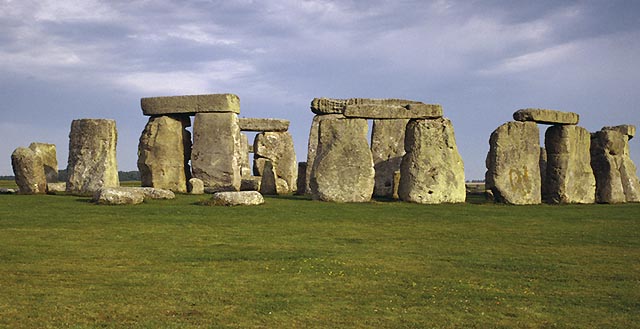
Summer Solstice in Stonehenge
With the advent of farming, people in the Neolithic period were highly dependent on the seasons. Events in nature, such as the blossoming of certain plants or the migration of animals, were correlated relatively early in history with the movement of the sun and the moon or with other celestial events. Astronomical principles were recorded, Stone Age “calendar systems” were developed.
The best known example of prehistoric astronomy is Stonehenge, a monument of colossal dimensions built in several phases between 3100 and 1600 BC in the south of England. Back in the early 18th century it was rediscovered that the main axis of the structure is aligned with the “Heel Stone” (Greek “helios” = sun) and points in the direction of the sunrise during the summer solstice on 21st June. Hence, Stonehenge presents itself chiefly as a huge calendar with which people can orient themselves throughout the year.
The presumed astronomical significance of Stonehenge still does not adequately explain why people would build a structure of such dimensions. Merely transporting and erecting the gigantic stones is an impressive achievement in itself, so that presumably cult worship played an important role in building the monument of Stonehenge.